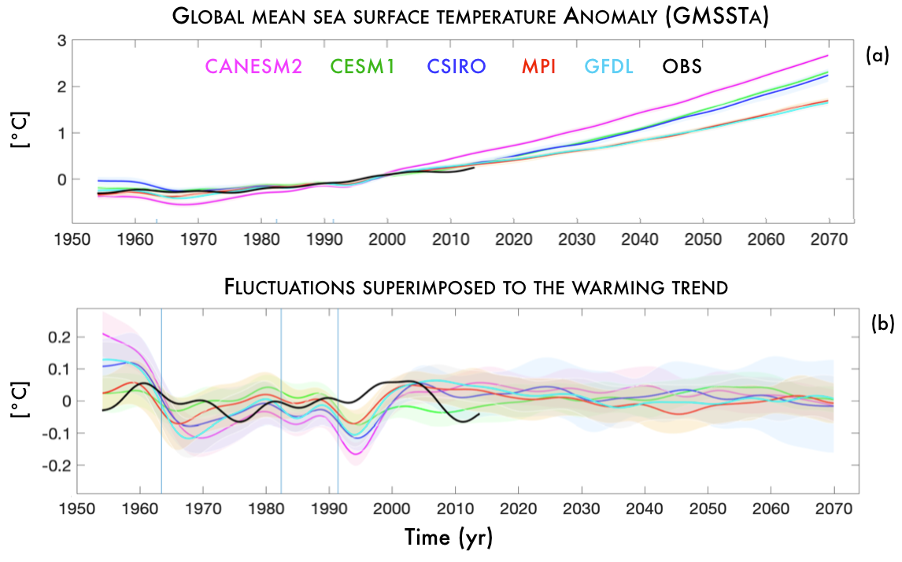Image (above): Volcanic Eruption. Credit: WikiImages.
We know that over the long-term, human-produced greenhouse gases are warming our planet (panel a). However, we know very little about decade-long variations in global mean temperature that are superimposed on the warming trend (panel b).

These decade-to-decade variations over the long-term trend are often thought to be the result of dynamics internal to the climate system.
The best way for researchers to understand these variations is to look at observations over an extended period but, unfortunately, the observational record is too short, so climate models are often used to recreate the climate and natural variations.
To isolate the internal variation in our climate system, CLEX researchers and a colleague from NCAR used an extensive climate model dataset. This dataset was taken from the results of multiple models each with multiple runs that cover the period 1920-2100. While several models are necessary to sample the uncertainty in the model representation of reality, numerous runs started with almost identical initial conditions are required to explore the many possible trajectories that the climate system could follow. This means that any differences between each run of the same model are caused by natural interactions inside the climate system.
Looking at the observations and climate model results, the researchers found that between 29%-53% of the variability in sea surface temperatures across each decade were caused by external influences, not internal variability. This external influence was primarily the result of volcanic eruptions, which throw particles high into the atmosphere where they remain for extended periods of time, causing significant cooling by screening the incoming solar radiation. These eruptions add an unpredictable external influence on natural variability that can override the normal processes of our climate system. This means that while we can estimate long-term surface temperature trends into the future, volcanic eruptions can have such a pronounced influence on our climate that decadal estimates might not be predictable.
- Paper: Liguori, G., McGregor, S., Arblaster, J.M. et al. A joint role for forced and internally-driven variability in the decadal modulation of global warming. Nat Commun 11, 3827 (2020). https://doi.org/10.1038/s41467-020-17683-7
